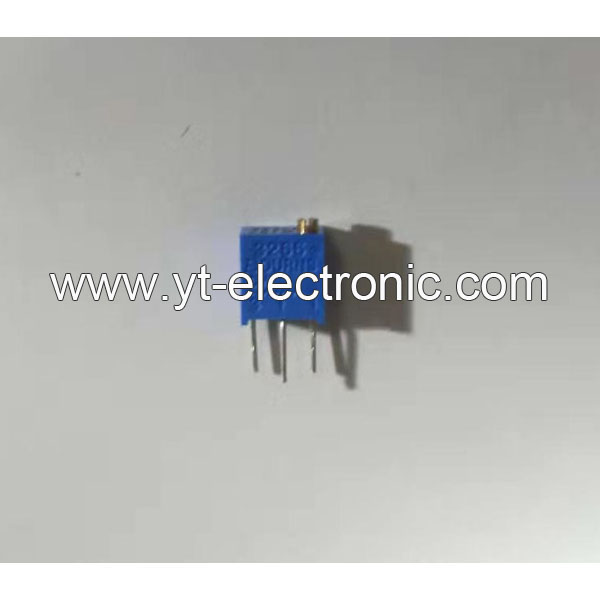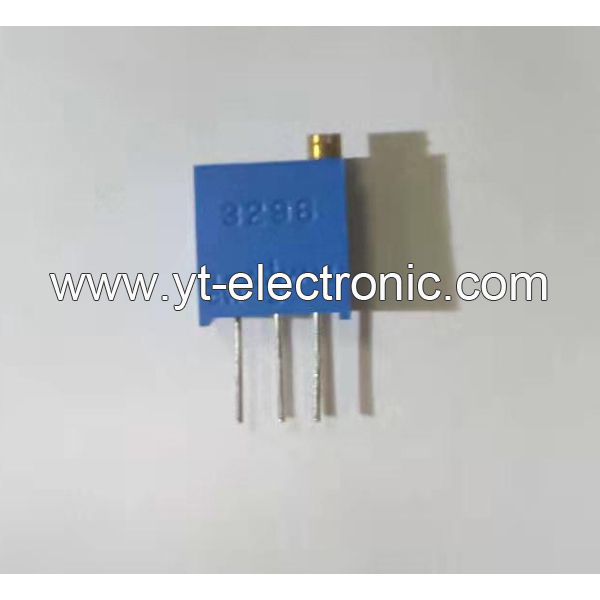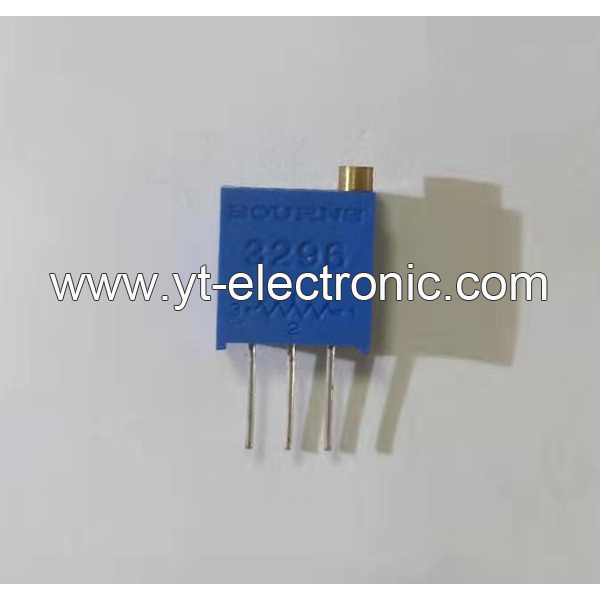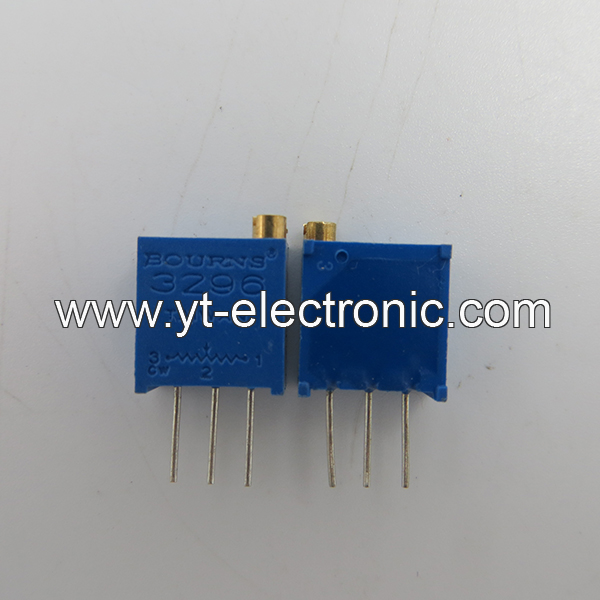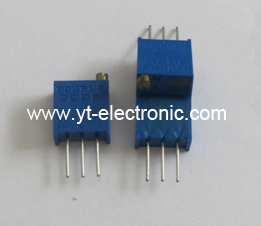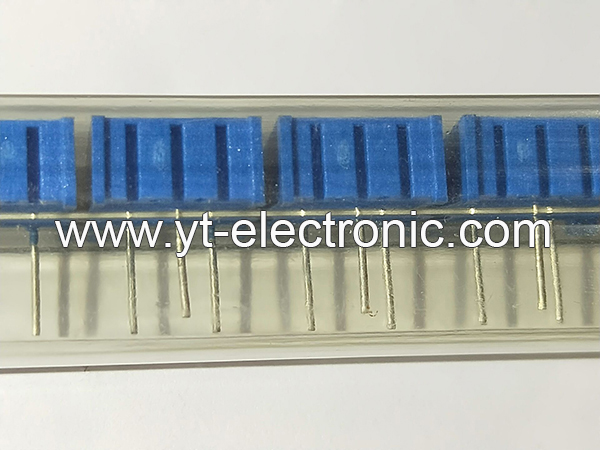Potentiometers, Variable Resistors
1. Potentiometers and Variable Resistors Overview
Potentiometer: A resistor element with three terminals and adjustable resistance. The resistance value is changed by sliding contacts to achieve voltage division or current limiting functions. Its core principle is to change the length of the current path or the contact area by adjusting the contact position, thereby changing the output resistance.
Variable Resistors: In a broad sense, it includes potentiometers, but in a narrow sense, it refers to variable resistors with only two effective terminals (such as fine-tuning resistors). The resistance value is changed by adjusting the mechanical structure, and it is often used for circuit calibration or debugging.
2. What is the Structure and Working Principle of Potentiometers?
Structure: The potentiometer consists of a resistor element (such as carbon film, and wire-wound resistor) and a sliding contact. The two ends of the resistor element are fixed terminals, and the sliding end (brush) changes the contact point position by rotation or linear movement.
Voltage division principle: The input voltage is applied to the two ends of the resistor element, and the voltage output between the sliding end and any fixed end is proportional to the contact position, realizing the voltage division function.
3. What are the Common Types of Potentiometers?
1)By adjustment method:
Rotary potentiometer: Adjusted by knob, widely used in volume control, brightness adjustment, etc.
Linear (sliding) potentiometer: Adjusted by linear sliding, suitable for scenarios requiring linear response (such as dimmers).
Trimmer: Miniaturized design requires tool adjustment and is used for circuit debugging or calibration.
2)By material and power:
Carbon film/ceramic film potentiometer: Low cost, suitable for low power scenarios.
Wire wound potentiometer: High power, high precision, used for industrial control.
4. What are Potentiometers Used for?
Voltage division and signal adjustment: Audio equipment volume control, sensor signal adjustment.
Power control: Light dimmer, motor speed adjustment (pay attention to power limit).
Calibration and debugging: Trimmer resistors are used for precise adjustment of circuit parameters (such as bias voltage).
5. What are the Key Parameters of Potentiometers?
Resistance range: Commonly from a few hundred ohms to megohms, selected according to the application.
Power rating: Determines the maximum power consumption that can be tolerated (such as 0.1W to 5W).
Linearity: The corresponding relationship between the change in resistance and the movement of the contact, affects the control accuracy.
Mechanical life: The number of rotations or slides (usually tens of thousands of times).
6. What is the Special Function Design of Potentiometers?
Attached switch: Some potentiometers integrate power switches, which are common in volume control knobs (triggered off when the contact is adjusted to the minimum resistance value).
Multi-gang potentiometer: Multiple resistance units are linked, used in stereo audio equipment.
7. Typical Brands for Potentiometers
BOURNS
VISHAY
TE
ALPHA
Panasonic
Amphenol
8. Potentiometers FAQs
1) What is the difference between a potentiometer and a variable resistor?
Potentiometer: Usually used as a three-terminal component, it outputs a voltage proportional to the contact position through the voltage division principle.
Variable Resistor: Generally used as a two-terminal component, it only limits the current by adjusting the resistance value and has no voltage division function.
2) What are the advantages of digital potentiometers?
It can be adjusted by a microprocessor or digital signal to support automatic control.
Some models integrate non-volatile memory to retain the settings after power failure.
It is small and high in precision, suitable for highly integrated circuits.
3) What are the common faults and detection methods of potentiometers?
Poor Contact: It is manifested as a jump in the output signal. A multimeter can be used to detect whether the resistance value changes continuously.
Mechanical Wear: Noise occurs when rotating or sliding, and the potentiometer needs to be replaced.
Detection Steps: Measure whether the total resistance of the two ends meets the nominal value, and check whether the resistance between the sliding end and the fixed end changes linearly with the adjustment.
4) Which special potentiometers have additional functions?
Potentiometer with switch: The switch can be triggered when rotating or sliding to the extreme position, which is often used in the integrated design of power switches and volume adjustment (such as old radios).
Multi-gang potentiometer: Multiple potentiometers share the same adjustment axis, which is used to synchronously control multiple signals (such as stereo audio balance adjustment).
5) What role does the potentiometer play in analog-to-digital conversion?
In the analog signal acquisition system, the potentiometer can be used as a voltage divider to provide a reference voltage and cooperate with the analog-to-digital converter (ADC) to convert analog signals (such as position and brightness) into digital signals.
Summary
Potentiometers and variable resistors adjust resistance values mechanically or digitally. They are core components of analog circuit control and are widely used in consumer electronics, industrial equipment, and debugging scenarios. Their selection needs to comprehensively consider resistance range, power, accuracy, and usage environment.




